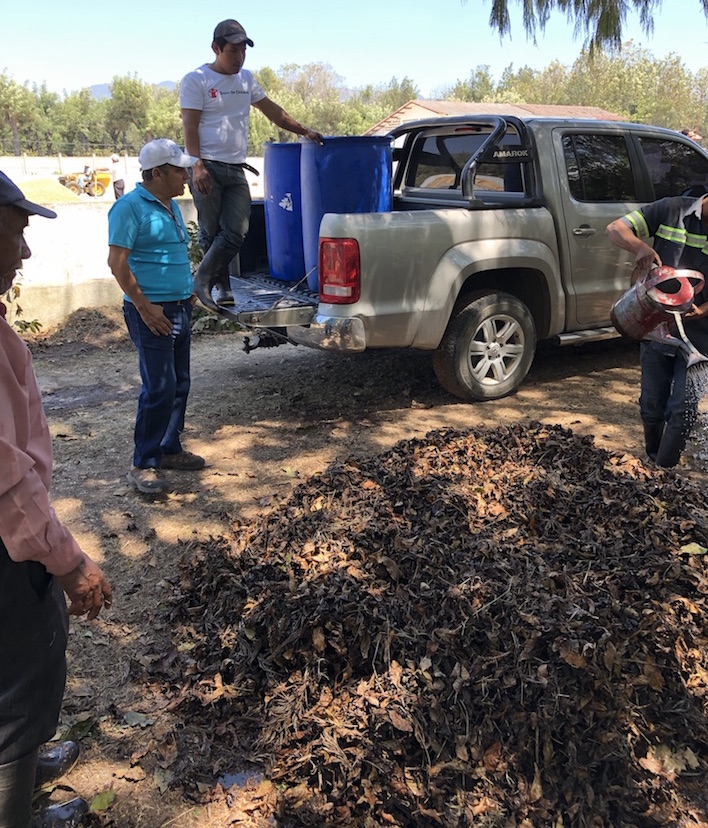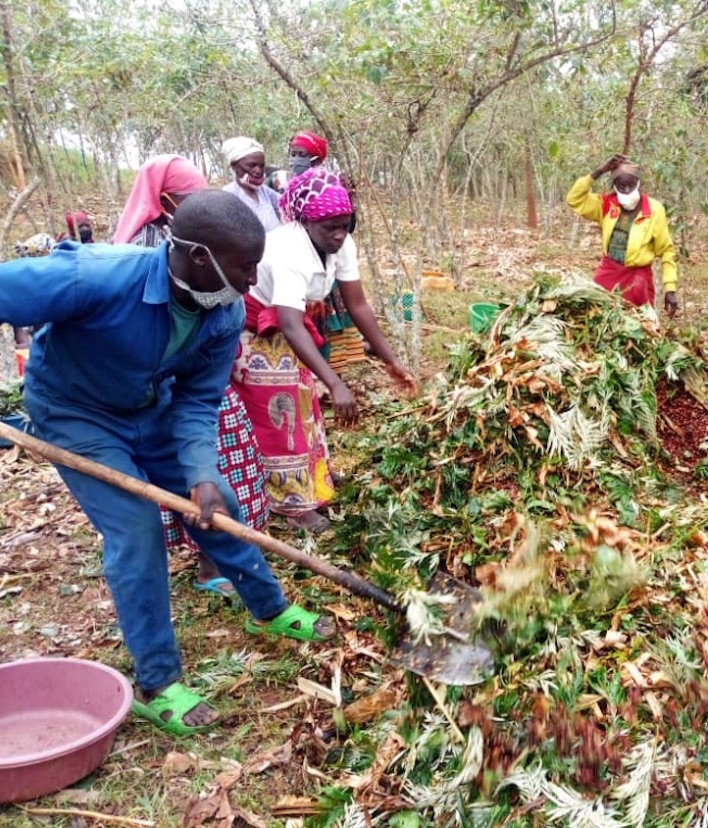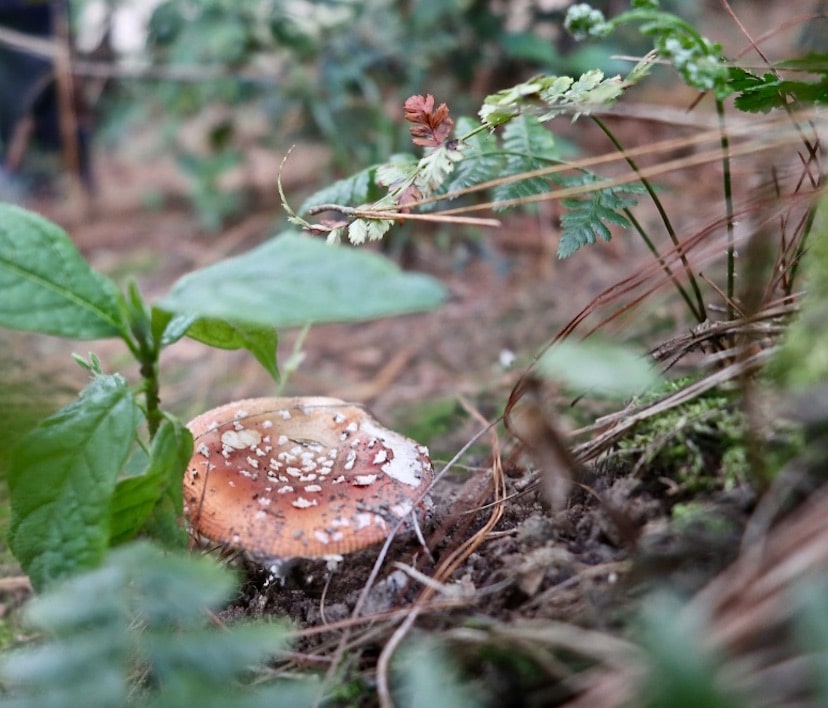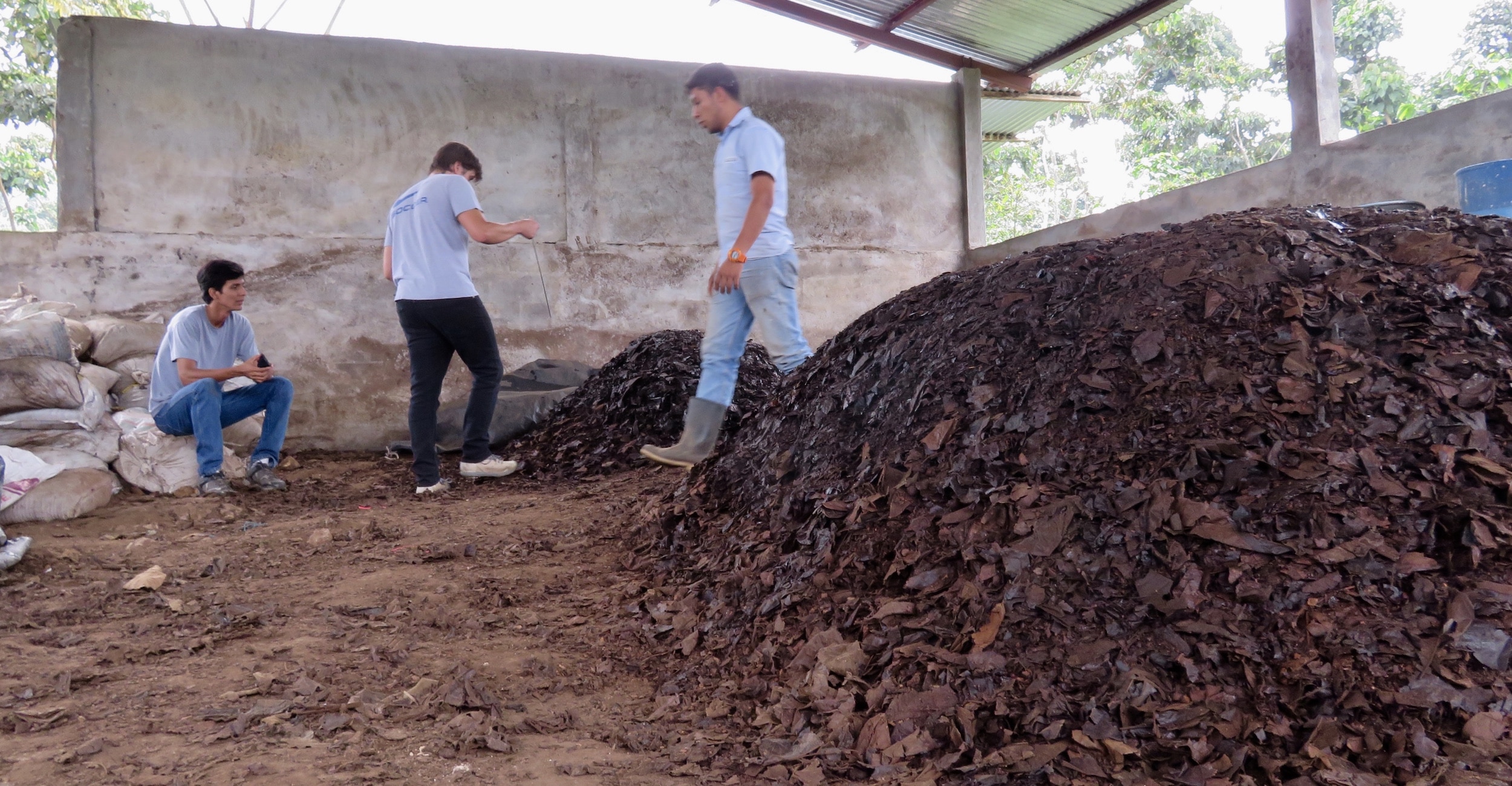04.22.21
Words: Andrew Timko
Agricultural land represents approximately 37% of our total land mass here on Earth, which includes coffee farms all over the world. That means the decisions farmers make affect a great deal of land mass — not to mention that their business and livelihood is heavily affected by climate change.
For that reason, we approach coffee sourcing and green coffee buying from a proactive position. In our experience, mutually beneficial relationships with coffee growers is what creates the best outcomes for them, for us, for Mother Earth, and for you, the customer. When goals are shared, collaborative change is overwhelmingly positive.

Farmer compost training with Los Volcanes.

Building a compost pile at the Ejo Heza sub-cooperative.
Moving Away From Fertilizer
In years past, we have frequently found that a primary goal for farmers was to reduce their dependence on fertilizer and other inputs, such as fungicides, herbicides, and pesticides. In fact, since the implementation of nitrogen fertilizers, researchers have been debating its relevance in providing food for a growing global population and its residual effects on our climate.
Meanwhile, these chemical inputs increased the cost of production for coffee farmers, limiting their long-term financial stability. Even so, these farmers felt it was too risky to stop using these inputs because their families and their employees’ families are dependent upon the coffee harvests for food, shelter, and all of life’s expenses.
Recognizing this enormous risk, we chose to help farmers reduce their dependence upon fertilizer and other “-icides” by establishing collaborative agreements that outlined our long-term commitment to their transition to better soil health. This means, when considering any project in which the farmer is going to potentially risk or negatively affect their harvest, Blueprint commits to the purchase of the farm’s coffee over the course of 3-5 years. This provides a guaranteed buyer at the end of the year, and, if necessary, additional costs may be added, based on the project’s goals.

Using Soil Health to Curb the Impacts of Climate Change
When we started to implement our soil-health programs in 2016, we did so as a response to the above conversations with farmers. We also sought to improve the quality of coffee by enhancing the plants’ ability to function and its mutualistic relationship with soil biology. But the tremendous effect on the earth is undeniable, as well.
As we progressed with our plans, carbon sequestration research was beginning to show that soil is one of our planet’s best options for carbon acquisition. Simply put, this is the idea that soil captures and stores carbon dioxide, thus reducing the amount in the atmosphere.
The research has proven that this process is most effective when soil biology (the organisms living in soil), organic material, and plant biomass are present. This is one of the main reasons forests are such a good “carbon sink” — they function without any man-made or artificial inputs. Unfortunately, conventional farming practices have led to the degradation of much of Earth’s agricultural soil. However, the good news is that restoring biomass and soil biology to farmland can restore that organic carbon and transform soil into a major “carbon sink” globally.
Since the beginning of our soil health work, Blueprint has contributed to the farming methods of thousands of farmers and assisted in the transition to regenerative practices on over 10,000 acres of land. We only buy coffee from a fraction of this land, but the knowledge and benefits have been passed on through agronomists at Beneficio La Esperanza in Antigua, Guatemala, and Kopakama Cooperative in Ramasheke, Rwanda.
For more information about soil biology and its importance in coffee farming, check out our blog post “Soil Health: the Foundation of Blueprint Coffee’s Green Buying Vision.”

